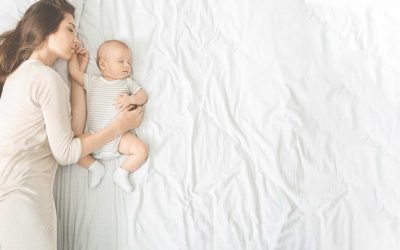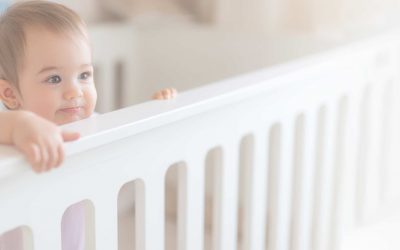Potty Training Tips for Bedtime
Many parents think that once a child is potty trained in the day and goes without diapers, they will magically hold their urine all night. I do not believe in “night training,” especially in toddlerhood. Your child may have the ability to hold their urine and their stool during the day, but once they sleep, all bets are off.
I want your child to get good sleep. If your child is worried all night or during nap time that they may have an accident in their bed, your child will not get the rest they need. Insufficient sleep will lead to an overtired child with more behavioral challenges and is much less likely to hold their urine or stool. I suggest focusing on potty training in the day first and follow that by potty training at night with positive reinforcement.
Potty Training Success – Start Potty Training In The Day
You want this process to be calm and controlled, not anxiety-provoking. So, please don’t consider getting rid of diapers at sleep times right after they master staying dry in the day. Of course, it will happen; it may happen quickly, or it may take many months or even years, but it will happen. Nighttime dryness is something your child will learn to control, and getting good sleep will make the process easier. In addition, your child will learn to be potty trained at night.
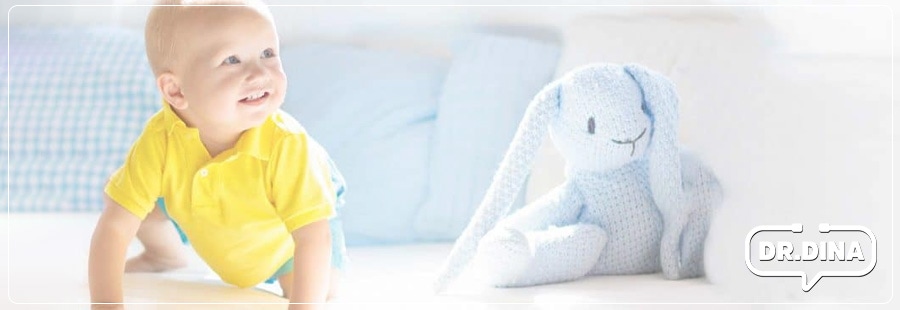
During the day, kids have the ability and the wherewithal to hold their urine and their stool. When we sleep, our bladder and bowels relax, especially in a deep sleep. To expect a child to know to hold their bladder while they are in deep sleep is unrealistic.
Many kids are trained during the day, even before age two, only to achieve night dryness several years later. For example, my sons were all day trained by two years of age and not potty trained at night until at least age six.
They sleep deeply, which I value. I want them to get the rest that they need. If I were to remove the diapers sooner, they would have accidents. They would feel scared or anxious overnight, and that could lead to sleep issues. Instead, I suggest waiting until your child is consistently dry overnight in their diaper or Pull-Up for two weeks straight. When they are, offer to remove that diaper. If your child wants to, that’s when they can start to sleep without the diaper on. Most kids are ready and eager to get rid of the diaper when they are consistently dry.
Alternatively, I find many parents try to force night dryness. They remove the diaper, and accidents occur. The child wakes numerous times a night to go to the washroom or to change their wet sheets. Or, to get rid of the diaper, parents wake their children up numerous times overnight to take them to the washroom.
I want kids to sleep long stretches of consolidated sleep each night. If we wake kids before we go to bed or in the middle of the night, we unnecessarily fragment their sleep. Now the child is not well-rested, which can affect emotions and behavior. An under-rested child is more likely to have behavioral issues during the day. We want our kids to get good sleep, which is far more important to me than them being out of a diaper. Did you know that up to 5 percent of 10-year-olds still can’t hold their urine overnight? That is a lot of 10-year-olds! If a child has been consistently wet at night but dry in the day, even until age 10, that is usually normal. Review with your doctor if a child has been dry for some time and is now wetting again.
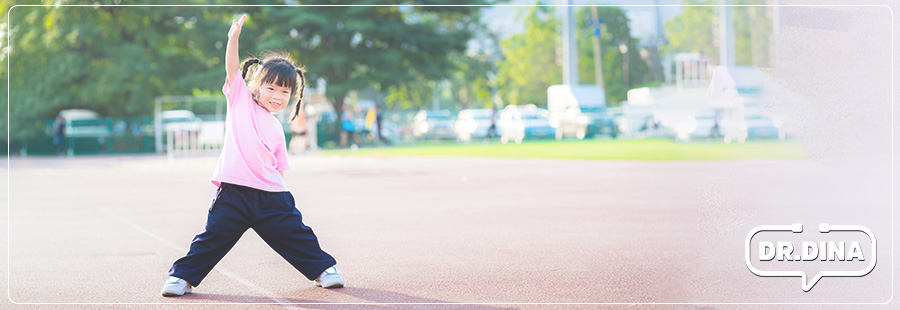
When a child falls into a deep sleep, they may relax their bladder and urinate, which they cannot control. Did you know that if you go and pee right now, you’ll still have 50–100 mL of urine in your bladder? Even directly after you urinate, there is some pee left behind called post-void residual. So we all have urine left in our bladder, even after we’ve just gone pee.
For this reason, if you take your child to pee before you go to bed or in the middle of the night, they have not completely emptied their bladder. Therefore, they are still at risk of urinating once they fall into a deep sleep. So, you’ve just interrupted their golden sleep, and they may still pee in a few minutes.
I also don’t recommend severely restricting fluids in the afternoon. Many of our kids eat their dinner within an hour or two of going to sleep. If we were to restrict the fluids, it could lead to dehydration or constipation. Even if you limit fluids before bed, they’ve had dinner recently. And most of the food that we eat has high water content. I recommend avoiding guzzling extra fluid before bed or sleeping with water by the bed if your child struggles with bedwetting. But to restrict regular drinking for hours before bedtime seems cruel to me and not very helpful.
Potty Training Tips
Tools on the market like buzzers and other wearable technology can alert your child that they have started to void. For example, if a child begins to pee, they will be buzzed, or a ringer will go off that will wake them up to alert them that they started to pee, which can be helpful for some kids if they are motivated to be dry at night. However, it does fragment the sleep and can be pretty scary for kids in the middle of deep sleep to be buzzed awake. This can make the nighttime potty training process scary and may make them refuse to potty train. If your child refuses to wear an alarm, don’t force it. We want them to start potty training with positive reinforcement and no stress.
Evidence shows these alarms do not change their ability to hold their urine. It just wakes them when they start to pee. Research shows that these work about the same as placebos. In other words, they are not very effective.
Potty Training Tips that Work
My recommendation to achieve nighttime dryness is to encourage your child to pee on the potty seat or potty chair before bedtime and discourage drinking excessively after dinner. I like to keep the diapers at night until they’re consistently dry. They are already potty trained in the day. After your child is dry each night for two weeks, remove them. Start the potty training process in this calm manner, and you’ll have a consistent potty schedule and less night waking quickly.
Not Yet Potty Trained at Night?
A trick for avoiding overnight accidents;
When you’re in the early stages of having your child hold their urine overnight, one thing that can help is to have them sleep with no bottoms. Muscle memory may make them feel that big kid underwear or pants or even a nightgown is the comfort of the diaper. We want them to have a solid and unconscious reminder that they are not in a diaper and should either pee in the washroom or hold it. Underwear or pajamas can contain an accident and make them feel something on their bum, making it more likely that your child will have the accident. An excellent potty training tip is to lie down towels under the bedsheet, or putting puppy pads down can be great.
I love using the strategy of making a “bed lasagna.” This is one of my favorite potty training tips. You can check out my TikTok page to see it in action. You are creating layers, like a lasagna, to catch accidents and ensure the cleanup is fast and easy. First, you put a puppy pad or washable incontinence bed pad on top of the fitted sheet.
On top of that, you add your regular sheet. Then you layer another puppy pad or incontinence pad and sheet, then another, and another. Thus, you are alternating puppy pad/incontinence pads and bed sheets three or four times. If your child has an accident overnight, you don’t have to strip the bed entirely, but rather only take off one sheet and one puppy pad with more layers of bed lasagna underneath. This way, overnight cleanup is much faster, less disturbing, and you’re more likely to get your child back to sleep quickly. Plus, older kids can learn to strip off the wet layer and go back to bed without even disturbing you.
My favorite pee pad for the lasagna trick is the Utopia underpad. It can retain 6 cups of water in the four layers. This helps keep your child and the sheets dry. In addition, they are large, at 34×26 inches, to cover most or all of your child’s bed.
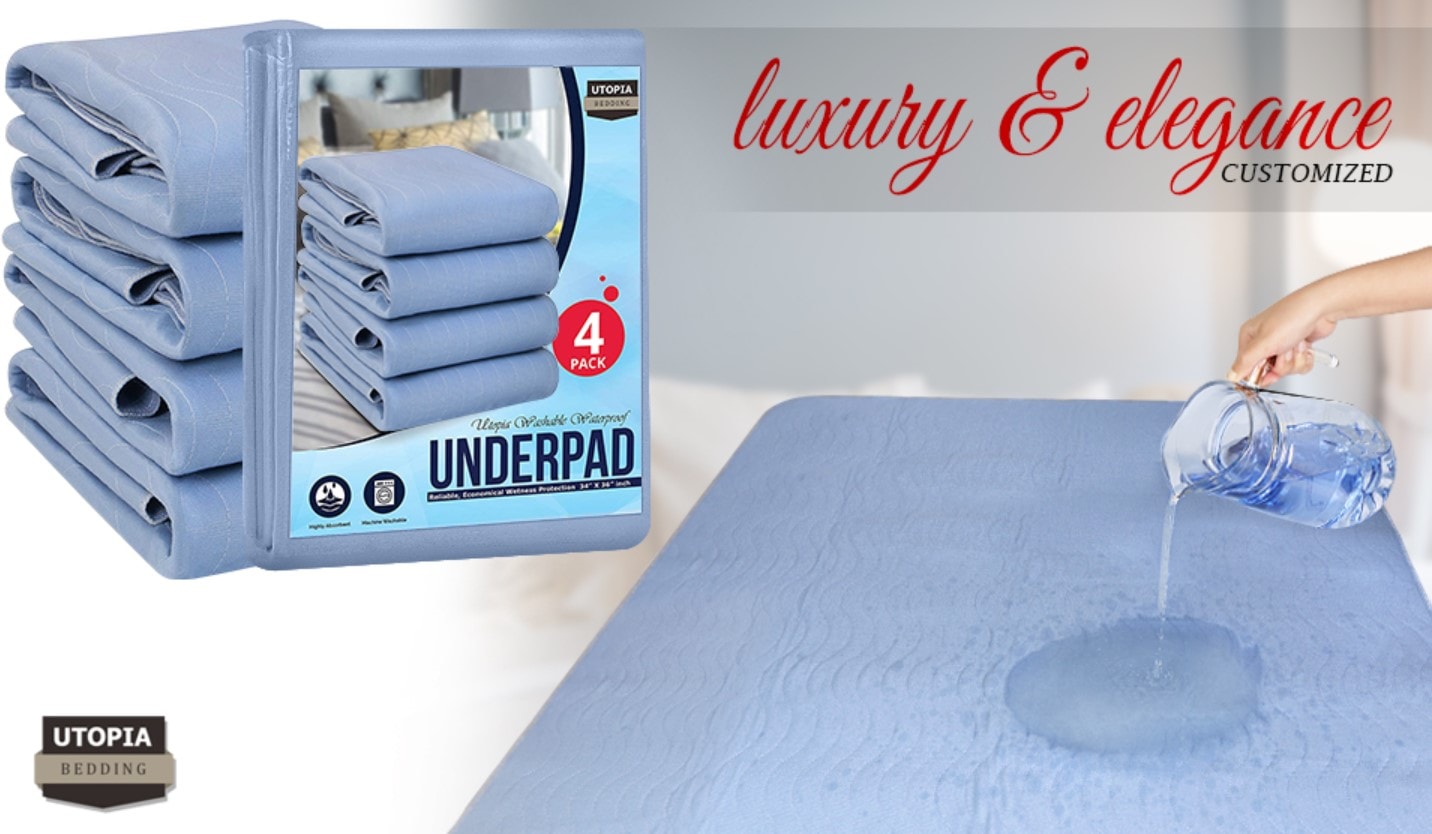
We have washed our hundreds of times, and they remain super absorbent time after time. The top layer is soft and won’t scratch your child’s skin. These pads have a non-slip backing to avoid it moving around when your child does. It stays in place where it is needed.

FAQ – Frequently Asked Questions
How do I care for my pee pad?
These pee pads can be washed in cold water in the washing machine. Tumble dry on low heat before putting on your child’s bed for the night.
How do I know if my child is ready for potty training?
Kids that are ready show signs that they are ready for potty training.
Here are the signs:
- Stay dry in their diaper for more extended periods.
- Interest in the potty seat, the toilet, toilet paper, and the bathroom.
- Desire to try sitting on the potty or the toilet.
- Motivated by reward and child learns through a reward system.
- Kid loves to please caregivers and siblings.
- Interested in learning new skills like sitting on the toilet seat or trying training pants/pull-ups.
- Interest in removing the child’s diaper to pee frequently in the toilet.
- Interest in wearing underwear and using the potty.
- The child prefers to wear underwear like a big kid.
Do I need to wake my child overnight to take them to pee?
No, you do not need to wake your child overnight. I don’t recommend it. I recommend taking your child to the washroom before they go to bed and when they wake up. Continue to offer diapers or Pull-Ups until your child is consistently dry for two weeks straight.
You are waiting for the brain–bladder connection, which can take several years. Even after daytime dryness is achieved, removing the diaper is not the whole part of the story. I don’t particularly appreciate waking our children in the middle of the night because it fragments their sleep; sleep for me is paramount, and they may still pee later anyway.
I do not mind if a child is in diapers for a few more months if that means they get a good night’s sleep. However, children are more irritable, and behaviors can be more challenging when they don’t get straight stretches of consolidated sleep. In addition, insufficient sleep may undermine your toilet training.
How can I train my child to stay dry at night?
Do not expect kids to be trained during the day and dry overnight soon after. Nighttime dryness can happen many months later. The connection between the bladder and brain needs to mature and will occur on its own. Eventually, you will notice their diaper staying dry, and once this happens, you can remove the diaper overnight.
Similarly, do not expect pee training and training for bowel movements to follow the same linear path. Most kids are dry from urine for weeks, months, or sometimes years earlier than poo-trained consistently.

Dina is a wife, mother of 4, and adrenaline junky. She loves to share children’s health information from her professional and personal experience. More About Dr Dina.






